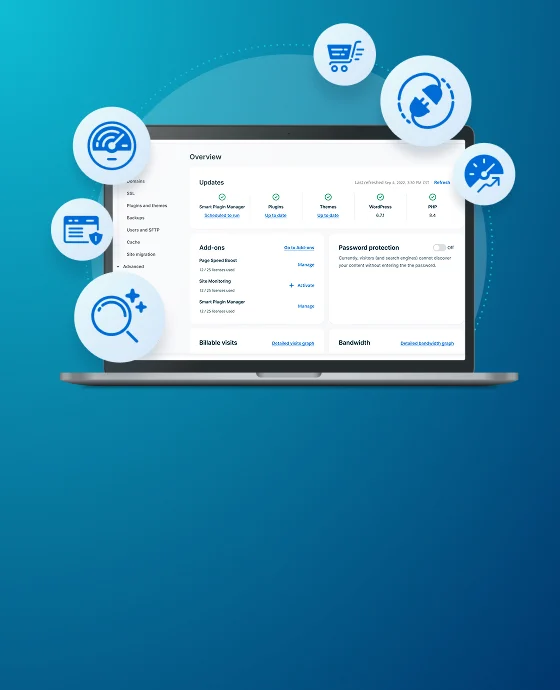How to Improve Communication Between Design and Content Teams
If you want to hit the sweet spot when designing a website, you need two things: beautiful, effective design and well-written, persuasive content.
Each is equally important. Well-written, clear, concise content loses its effectiveness in a bad design or layout, while a beautiful site has little use if its content is pure garbage.
Yet, all too often they’re treated as individual entities, with content usually ending up the loser, added as an afterthought once the site has been fully built out. While this still results in a functional website, there is often a disconnect between content and design, leaving users struggling with an unnecessarily complicated flow.
However, when there is a solid content strategy in place and a lively interplay between content and design, this is where the magic happens and the results can be spectacular.
The trick is maintaining excellent communication between web design teams and content creators throughout the entire process. Here are five tips to keep you on track.

1. Learn Each Other’s Language
I’m not talking about literal language here, although of course you need to share knowledge of at least one language, even if it isn’t your mother tongue, to be able to communicate effectively.
But more important than that is having a basic understanding of each other’s creative language.
If a designer simply copies and pastes content into their finished design, mistakes could easily find their way onto a page (content creators are human, after all!). But if the designer has a working knowledge of the style guide used by the content creators—such as the rules for capitalizing headings, whether the site should be in British or American English, how bullet points should be punctuated, and so on—they can spot these errors before the site goes live.
Likewise, if a writer understands the colors, icons, and imagery to be used on the site, this can help to create a consistency across it, and across all marketing and branding materials for the client.

The more each side understands how their colleagues work and why they do things in a particular way, the less time will be spent correcting errors before the site can go live, or, worse, publishing a site with errors.
2. Build a Solid Foundation
Start by involving both content and design teams in the initial preparatory work. Encouraging both teams to work together, and share and collaborate on ideas from the outset, will ensure that both are on the same page when the work gets underway.
You need to clarify several things at the start of the project, including who your audience is, an approximate word count for the project, the main message you want to convey, and your calls to actions.
Achieving clarity on these issues will help the writer to produce the right message, and will help the designer choose the best layout, color scheme, and imagery for the site.
What’s more, if a designer doesn’t know the why of a project, they could spend too long making something look beautiful when it’s not necessary, or spend too little time on something that’s very important. By involving both sides from the outset, they will understand the main goals for the site—such as feature promotion, sales leads, etc.—which will help determine how much time to dedicate to the project and which elements are the most important.

3. Practice Content-First Design
Frequently, designers fall back on the age-old method of adding ‘lorem ipsum’ to a site while in the initial design stages, simply because it’s convenient. Then they swap it out for the real thing before the site goes live.
But this isn’t the best way to work; you should always start by producing the content and working from that, even if it’s just a first draft. When you start with words, it helps to frame the project for the designer so they produce designs that are more relevant and more reflective of the product’s purpose.
Content is key to the final product. It forms the backbone of the website and should be developed alongside the visual design to ensure the site is as successful and effective as possible.

4. Write Designer-Friendly Content
One for the content creators—when you’re producing copy for a site, write with the designer in mind. Your copy should be concise and fairly simple. Avoid long, blocky paragraphs—remember having lots of white space makes it easy to highlight the important points and ensure the main message gets across clearly.
Bulleted lists are a great way to organize material and break up text-heavy content. This will allow the user to find the information they seek, and designers will thank you because they can easily make this look beautiful on a page.
5. Maintain Open Channels of Communication
It’s not enough to set up the project together then disappear into your individual bubbles to work on your contribution separately. Content and design teams should maintain a constant flow of communication throughout the process.
If you work in the same office, arrange for regular meetings to discuss your progress, and look at areas that require clarification. Designers can work with content templates based on approximate word counts while the copy is being finalized, and these can be displayed with the design on a screen where both teams can discuss the design and comment on the content.
Having this kind of regular check-in and giving both teams the opportunity to comment on each other’s work will make the finished product much stronger. And don’t worry if your team isn’t all based in the same office, or even the same country—there are plenty of tools available for you to hold face-to-face meetings, share your progress, and manage and track the project.
These are our top five tips for improving communication between web design and content creation teams. Remember this advice when you’re creating internal processes to ensure your design and content teams communicate effectively during a project!


